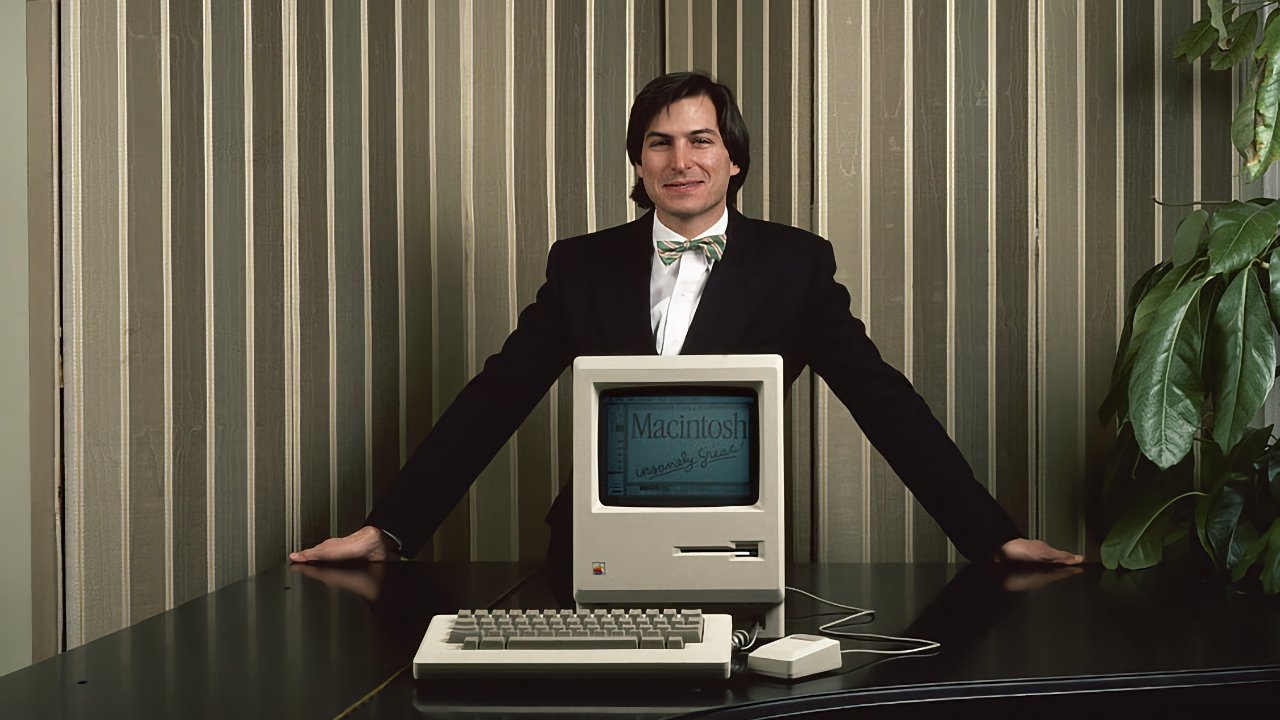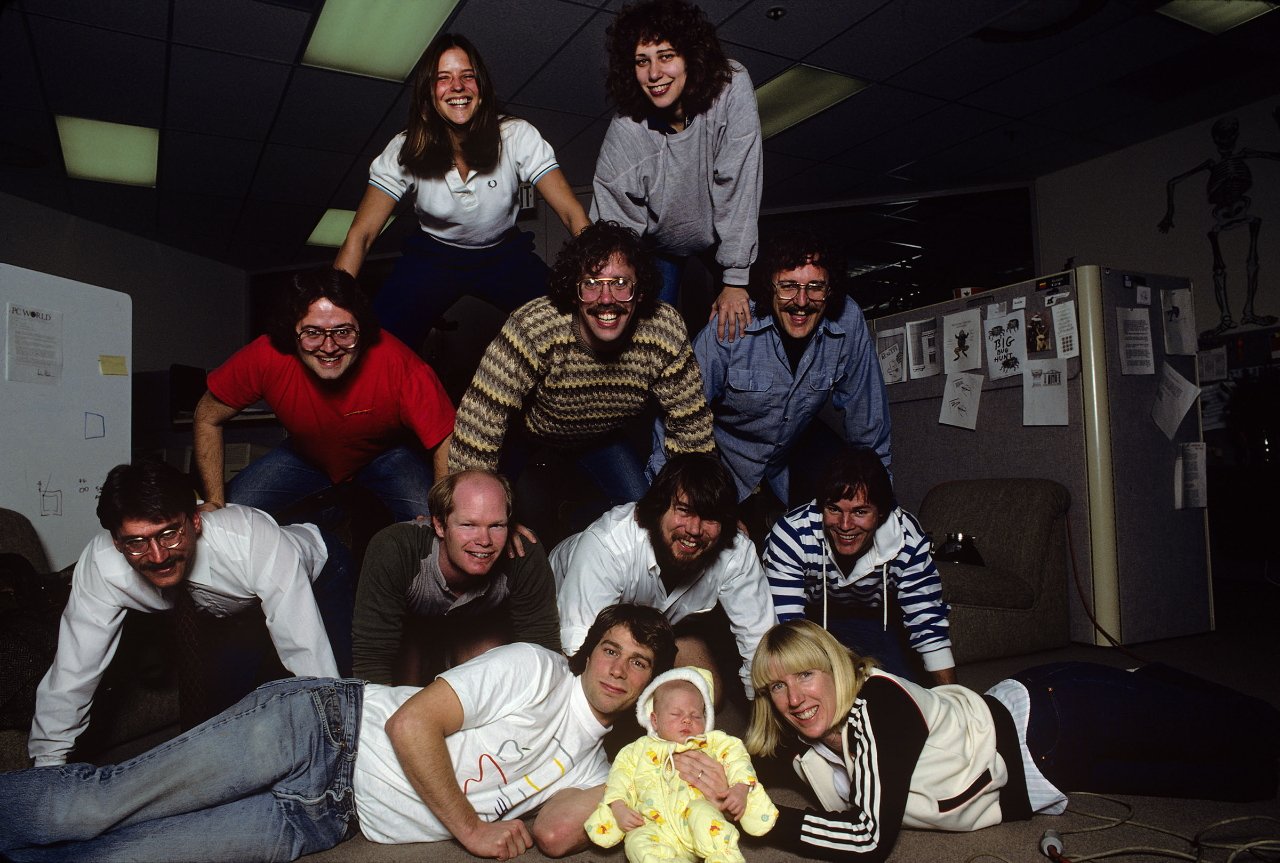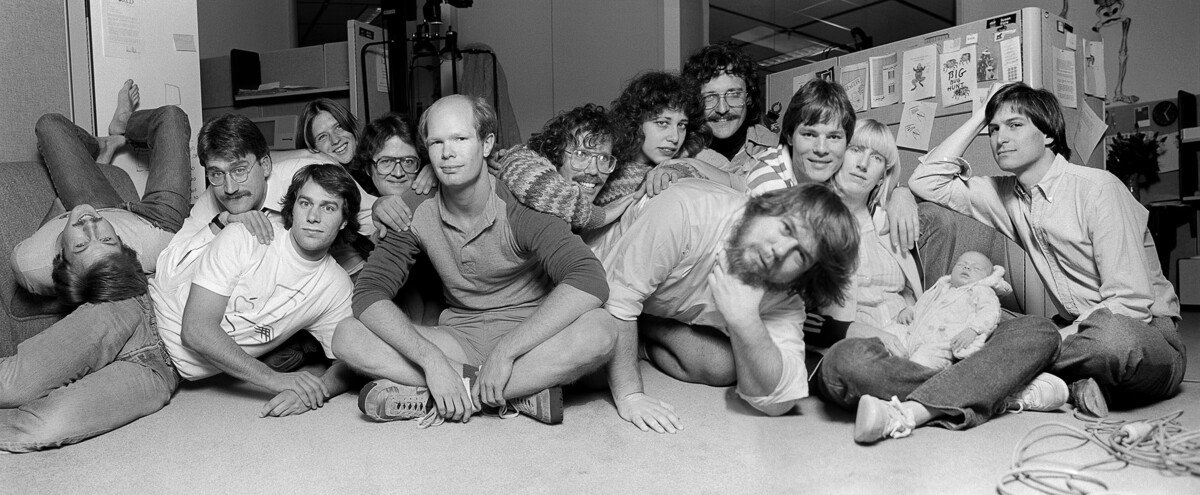Marking the 40th anniversary of the Mac, the Steve Jobs Archive has revisited the day "Rolling Stone" magazine sent a photographer to this "weird company."
Launched in 2022 by Laurene Powell Jobs, Tim Cook, and Jony Ive, the Steve Jobs Archive aims to honor the legacy of Jobs, and to launch both new programs and publications. Now the latest of its occasional emails has chosen to celebrate the Mac's 40th anniversary by recounting a particular day in the computer's life.
In January 1984, "Rolling Stone" photographer Norman Seeff was sent to Apple and told only that this "weird company" of hippies or "whiz kids" were making computers. When he got there, he found the jeans-wearing, barefoot software team working on the Mac.
"It looked like a commune," said Seeff. "It was so alive."
The software team was reportedly hanging around the cubicle of Susan Kare, who designed all of the Mac's icons. On seeing him prepare to shoot, the team rushed to assemble themselves into a human pyramid.
"I'm the lightest one, so I ended up on top," said Rony Sebok. Now Director of Intelligent Video at Crestron Electronics in Boston, she was then a software engineer fresh out of Harvard.
"It wasn't a childish group," she continues, "this was a bunch of mature people, even though we were young. But it was playful."
As well as Sebok, the human pyramid included Susan Kare, graphics engineer Bill Atkinson, primary Mac architect Andy Hertzeld, and eight more.
The pyramid did not last for more than a few moments, though, but when it was collapsed, Steve Jobs jumped in at the end.
 William Gallagher
William Gallagher










 Charles Martin
Charles Martin
 Marko Zivkovic
Marko Zivkovic
 Andrew Orr
Andrew Orr
 Amber Neely
Amber Neely

 William Gallagher and Mike Wuerthele
William Gallagher and Mike Wuerthele











1 Comment
Is there a way to view that story on the Archive?